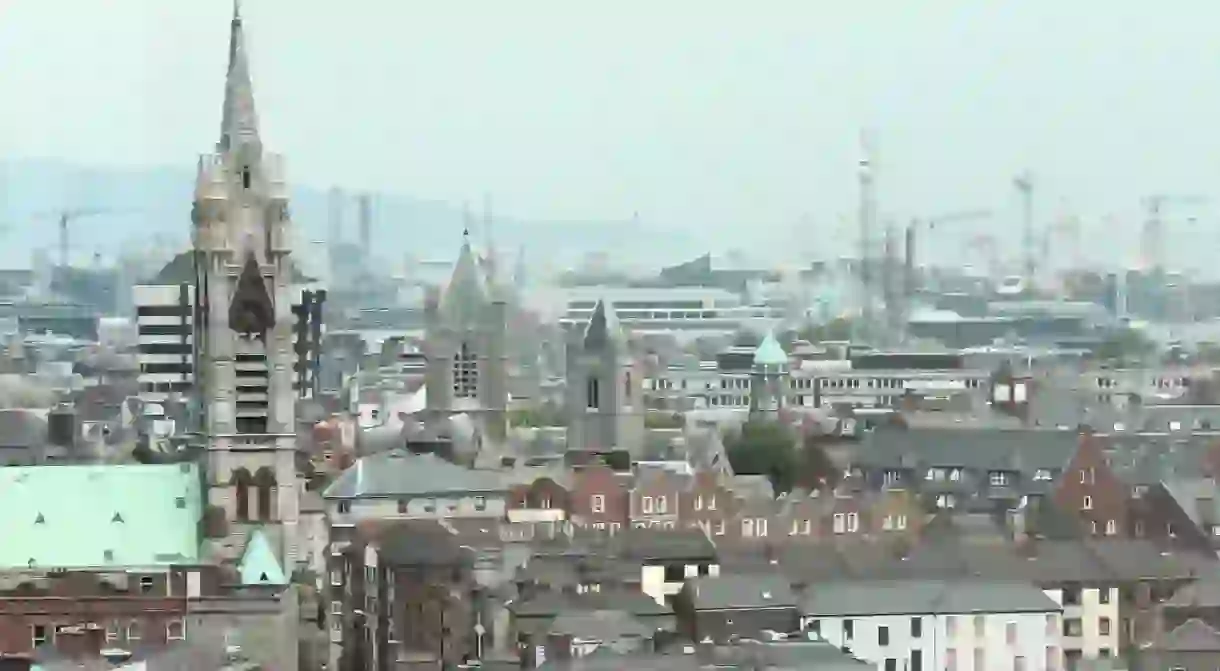Hidden Architectural Secrets And Mysteries of Dublin's Georgian Quarter

Georgian Dublin has a strange place in the annals of the city’s history. Largely viewed as a symbol of British rule when Irish independence was formalised in the 1920s, the city planners of the time cared little for the elegant old buildings, and much of the city’s heartland sadly fell away. But there are some treasures still to be discovered. Read on to find out where…
This British-built affront to independence was considered so ‘un-Irish’, that the entirety of the now-vaunted Merrion Square was once scheduled to be demolished. Ultimately, it benefited from the suffering of others, as its character was preserved by the Second World War taking precedence over city development. By the time the war was over, the entire plan was forgotten about, and the city is unquestionably the richer for it.
The Irish Parliament building, Leinster House (home to the modern-day Irish parliament, the Dail) is also a classic Georgian building, dating from 1745. They offer free daily tours, booked here. Many other city-centre institutions are adapted from the same origins, like the Powerscourt Centre, and the Merrion Hotel. Architecture enthusiasts should head for the Georgian district, located to the south and east of the Irish parliament, taking in St Stephen’s Green, Merrion Square and the surrounding streets.

The elegant houses
Despite the early disdain of the newfound Irish state, Georgian houses in Dublin have come to be seen as an asset, so much so that the Communist-style blocky architecture of the ESB building (currently being heavily revamped) has long been one of the most hated in the city, in part because it replaced a line of 20 of those old Georgian townhouses. The change of heart didn’t take place early enough for many, though, with estimates saying that over half of the soaring old terraces around St Stephen’s Green were demolished and replaced by the end of the 1960s. They were built in the 18th century as a symbol of Protestant wealth and a far cry from the lives of most of the city’s population at the time.
Perhaps the most accessible example of a Georgian House is the wonderful James Joyce Centre, found on the north side of the city (a great chance to get inside a building as most of these terraces are in private hands). In the Georgian Quarter itself, you’ll have to wait until 2020 for the reopening of the fantastic Number 29 for a deeper glance (a museum of life inside one of these properties, currently closed as part of the ESB building revamp), but you can get a taste of the internal structure of one of the buildings through a visit to the opulent Restaurant Patrick Guilbaud (Ireland’s most acclaimed eatery), or a more budget-friendly trip to the (still plush) House Dublin. Alternatively – and perhaps best of all – travel out of the city to suburban Marino, where the stunning, compact Casino Marino is the perfect hidden period gem.
Take the Pat Liddy walking tour. Liddy himself was prominent in capturing Dublin’s fading architectural glory right as the city was pulling down many of these great buildings. An artist and painter, his tours reflect on the architecture as well as the history.

The iconic doors
It’s an odd quirk of the way modern-day tourism works that it’s not the overall view of the Georgian period that tends to draw in travellers, but one particular aspect: the doors. Sure, the houses themselves are ornate, grandiose, sometimes ivy-covered beauties with fantastic delicate elements, like the occasional tumbledown balcony, and grand-stair entrances. But the doors are great, too, and you’ll inevitably come across lots of them as you explore.
The thick Georgian doors became an icon of Ireland when they were used to promote the country around St Patrick’s Day in New York in the 1970s, and they’ve never really lost their lustre, with countless visitors still tracking them down, and the images adorning endless posters and postcards throughout the city. Decorated, hefty doors with elegant knockers, bright colours, wrought-iron boot-scrapers and even embedded decorations in the pavement were a way to set homes apart in the luxurious Georgian townhouse terraced streets.
In short, if you’re into detail, these are probably going to be your idea of paradise. You’ll find one of the most famous doors in Irish literature, the door to 7 Eccles Street (home to Leopold Bloom and Molly in Joyce’s Ulysses) preserved within the James Joyce Centre.
The most ornate door we’ve found to date is the beautifully decorated entrance to a solicitor’s office, towards the western end of Merrion Square South. It’s blue, with sublime red and white panels depicting different scenes.

Less-trodden streets
While the most well-known Georgian houses are all around the south-west of the city, an area recently branded the Georgian Quarter, some of the better preserved old-style streets are found in the charismatic area to the northeast of O’Connell Street.
North Great George’s Street, for example, is such a beautifully preserved line of houses that it’s often been used to represent the era in period-drama style films. That, in turn, has caused some local controversy when it’s been used to represent Britain, in particular with the decision to allow postboxes that were originally installed under British rule, to be temporarily painted back into the British traditional red, rather than Irish green, for filming purposes.
Make no mistake, though, this area is a distinctly Irish kind of plush, so much so that it’s become a staple stop-off on the way to the towering GAA stadium Croke Park.
Then, on the south side, there’s Fitzwilliam Square, with its gardens still private, and its footfall half that of Merrion Square a few hundred metres away. It feels privileged; an inaccessible little world of opulence and stunning architecture. Cars still buzz by of course, but it’s as close to the feel of Georgian Dublin that the modern day city has to offer.














